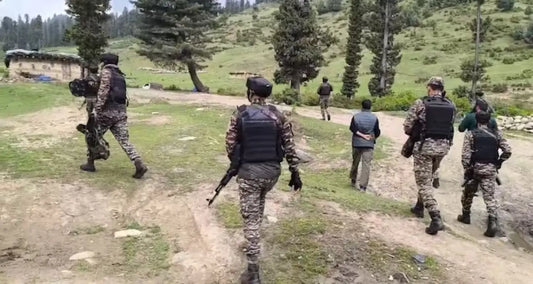Indian Army Implements Red Teaming Strategy for Enhanced Military Preparedness

The Indian Army has initiated the institutionalization of a modern war-gaming technique known as red teaming. This approach is designed to replicate the mindset of potential adversaries to test existing strategies and enhance operational readiness. This strategic move is aimed at countering evolving threats from nations like China and Pakistan.
In an interview with ANI, Lieutenant General Sumer Ivan D’Cunha, Director General of Military Operations (Air Defence), confirmed this development. He stated that the red teaming methodology has been incorporated into recent internal exercises and will soon be extended to other commands. “The United States has long adopted red teaming, and Israel has employed it to some extent. Under the leadership of both the current and previous Chiefs of Army Staff, we have begun integrating this in India,” he mentioned.
Red teaming, also referred to as devil’s advocacy or alternative analysis, involves establishing an internal team that simulates an enemy force. This team evaluates potential enemy actions, capabilities, and reactions to identify vulnerabilities in India’s military strategies. It allows commanders to challenge their assumptions and test battle strategies under conditions that closely resemble reality.
The primary benefits of red teaming include predicting adversary intentions, enhancing the robustness of operational plans, and preventing mirror imaging—the assumption that the enemy will act in the same manner as one’s own forces. This aspect was particularly crucial during the 1999 Kargil War, where Indian forces initially misjudged the enemy's strategy.
Lt Gen D’Cunha explained that India's red teaming efforts involve modeling the decision-making styles of leaders such as Pakistan’s General Asim Munir. This approach aids India in understanding how these adversaries might respond under duress or provocation. Red teams also simulate potential counteractions to tactical adjustments and deployments, allowing Indian planners to adapt their response strategies accordingly.
On a global scale, red teaming is a critical instrument in U.S. military and intelligence operations, especially in war games and high-level threat assessments. Israel has selectively utilized it to anticipate the actions of both state and non-state actors in its complex regional landscape. Both nations acknowledge the technique’s effectiveness in uncovering strategic vulnerabilities and enhancing response capabilities.
In India, red teaming now encompasses several elements: cognitive profiling of enemy leadership, simulation of enemy tactics and procedures, threat modeling to identify defense deficiencies, and testing of India’s response systems under simulated attack scenarios. The objective is to improve agility and reduce decision-making time in actual operational contexts.
With red teaming now officially integrated into the Indian Army’s strategic planning framework, experts suggest it may become a cornerstone of national defense planning. In a swiftly changing security environment, the capacity to anticipate the enemy’s actions could emerge as one of India’s most significant strategic strengths.



















